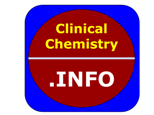Clin Chem Lab Med. 2025 Jun 24;63(11):2330-2340. doi: 10.1515/cclm-2025-0045. Print 2025 Oct 27.
ABSTRACT
OBJECTIVES: Glycosylation is a tightly controlled co-translational and post-translational enzymatic modification. Total N-glycome profiling in blood serum/plasma provides information on the most common serum/plasma glycosylation. Total plasma N-glycome from various population samples displayed predictive ability for type 2 diabetes incidence in two previous studies; we therefore explored the ability of total serum N-glycome to predict this disease in a general adult population.
METHODS: This prospective cohort study included a random sample of 1516 adults from a single Spanish municipality. Participants’ glycemic status (non-diabetes, type 2 diabetes) was evaluated at baseline and at a mean follow-up of 7.4 years. Total serum N-glycome at baseline was also measured. Serum enzymatic N-glycan release was performed on a robotic platform followed by HILIC-UPLC glycan separation. Total serum N-glycans were quantified and employed alone, as well as in combination with classical risk factors, to construct type 2 diabetes prediction models.
RESULTS: Total serum N-glycome peak 37, mainly composed of A3F1G3S3, predisposed participants to type 2 diabetes; however, total serum N-glycome peak 24, mainly composed of A2G2S2, was protective against type 2 diabetes. The interaction between total serum N-glycome peaks 37 and 24 predicted the incidence of type 2 diabetes over time (area under the curve 0.801 [0.750-0.853]). Their predictive power had an independent and additive effect on classical prediction factors.
CONCLUSIONS: The interaction between total serum N-glycome peaks 37 and 24 may constitute a promising predictive biomarker for type 2 diabetes improving the classical prediction tools.
PMID:41025837 | DOI:10.1515/cclm-2025-0045
